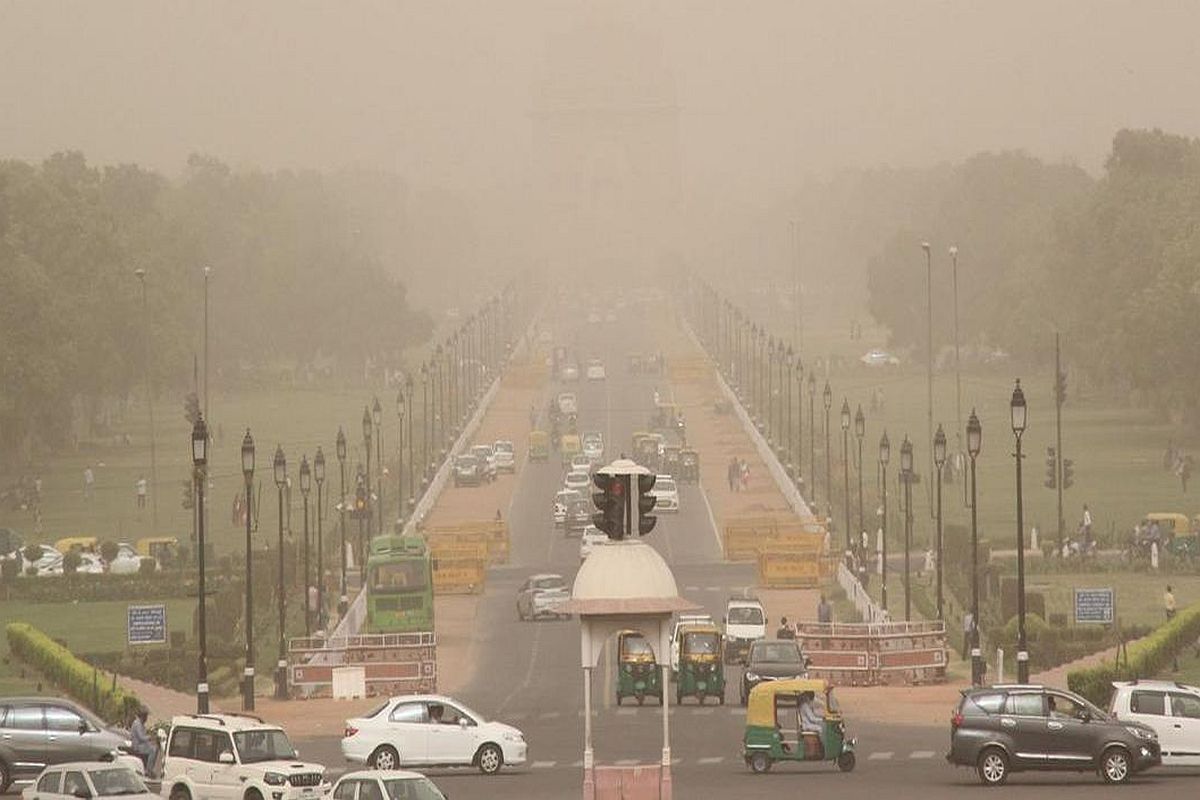Three gangsters land in Delhi Police net following back-to-back encounters
In back-to-back two encounters, three gang members of the infamous Om Prakash-Kala Jathedi syndicate were apprehended by the Delhi Police, police said on Tuesday.
At the Dwarka Sector-8 monitoring station as well, PM2.5 levels rose steadily late on Thursday night to reach 1,250 at 11 pm and 1,312 by midnight.

Representational image (File Photo: IANS)
The air quality in the city reached the “severe” level on Friday morning with the city having witnessed large-scale bursting of firecrackers on Diwali despite a ban imposed by the Delhi government.
The data provided by the Delhi Pollution Control Committee (DPCC) indicated that the pollution level rose sharply from Thursday night onwards.
Advertisement
At the Jawaharlal Nehru Stadium station, for instance, PM 2.5 levels increased from 389 µg/m3 at 8 pm on Thursday to a high of 1,553 µg/m3 at 1 am on Friday. This is nearly 26 times the standard of 60 µg/m3 for PM2.5. It stood around 1,164 µg/m3 at 6 am on Friday.
Advertisement
PM10 levels at the station also shot through the roof early on Friday morning. At the Jawaharlal Nehru Stadium monitoring station, PM10 levels hit 1,643 µg/m3 at 1 am on Friday, up from 519 µg/m3 at 8 pm. The standard for PM10 levels is 100 µg/m3.
Sulphur dioxide emissions recorded at the station also peaked around 1 am on Friday to 35.5 µg/m3 while the level of nitrogen oxide hit a high of 142.8 µg/m3 at 1 am, up from around 24.7 µg/m3 at 7 pm Thursday.
At the Dwarka Sector-8 monitoring station as well, PM2.5 levels rose steadily late on Thursday night to reach 1,250 at 11 pm and 1,312 by midnight.
As a 24-hour average, the AQI at several monitoring stations stood in the ‘severe’ category at 10 am on Friday. At Jawaharlal Nehru Stadium, the AQI was 470 while at Ashok Vihar it stood at 469. AQI between 401 and 500 is considered ‘severe’ and it can “affect healthy people and seriously impact those with existing diseases,” according to the Central Pollution Control Board (CPCB). The Jahangirpuri station recorded an AQI of 487 while Lodhi Road registered 465.
Scientists at the SAFAR forecasting system had predicted earlier that air quality, which was already in the ‘very poor’ category, would plummet to the ‘severe’ category if even 50 per cent of the firecracker emissions witnessed in 2019 were recorded this year.
Air quality in Delhi had already reached the upper end of the ‘very poor’ category as a 24-hour average on Thursday when it stood at 382.
Fog conditions over Delhi intensified on Friday morning with visibility dropping to a range of 200 m to 500 m at the Safdarjung and Palam airports at 5.30 am, according to scientists at the India Meteorological Department (IMD).
The Air Quality Early Warning System for Delhi forecasts that the AQI will remain in the ‘severe’ category on Friday with the contribution from firecracker bursting, stubble burning and weather conditions having caused it to plunge. With strong winds blowing, the AQI could improve on November 6 and 7 to stand in the ‘very poor’ category.
Advertisement